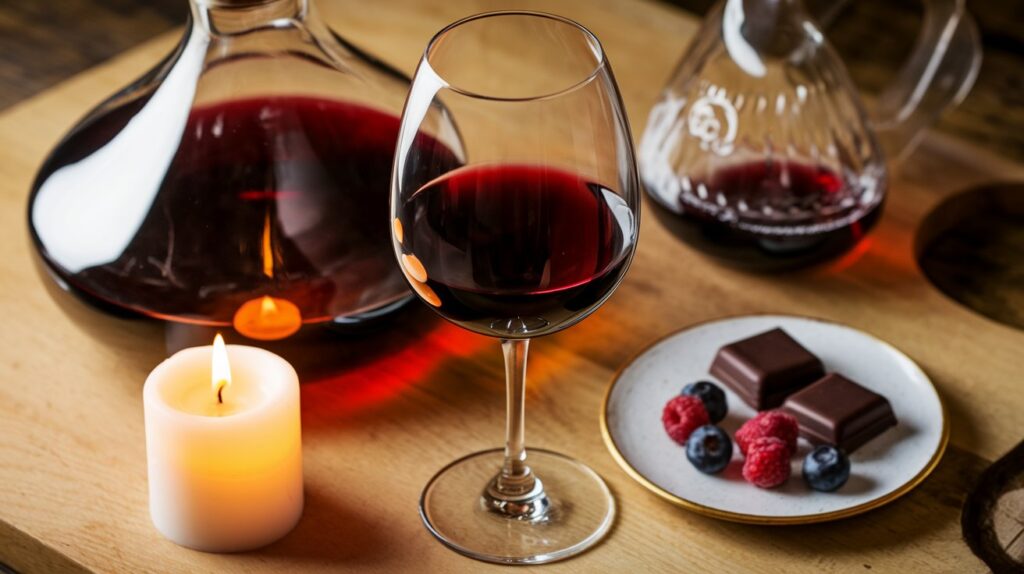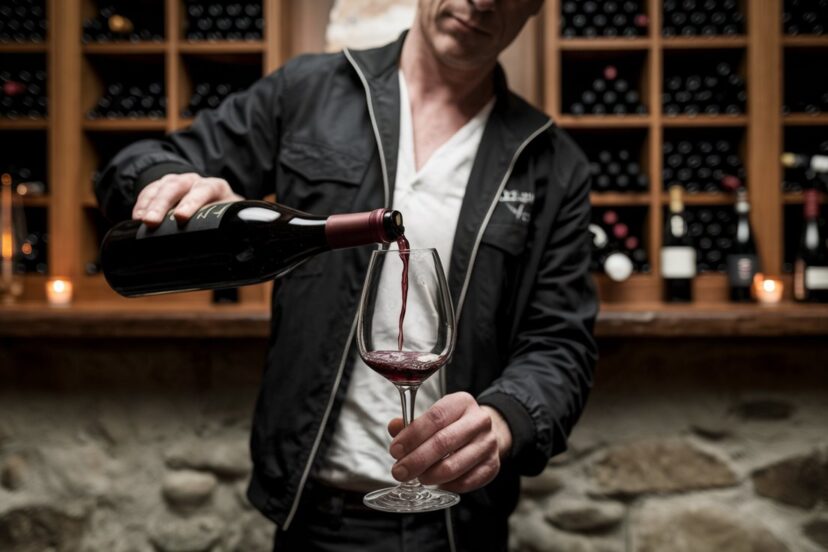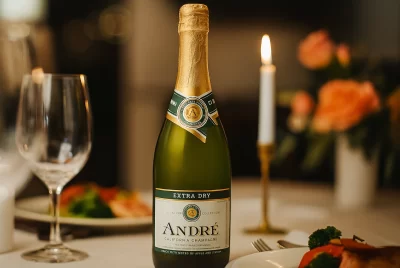What Gives Wine Its Aroma and Flavor?
Post Disclaimer
*We may earn a commission for purchases made using our links. Please see our disclosure to learn more.
Wine is more than just a drink, it’s a story in a glass. Every swirl, sip, and scent reveals the land it came from, the craftsmanship behind it, and the natural elements that shaped its character. From rich, dark berries to smoky oak and earthy spices, each bottle offers a unique sensory experience waiting to be explored. But what gives wine its aroma and flavor? The answer lies in a delicate balance of grape variety, terroir, fermentation, and aging, each contributing to the complexity that makes every wine unique.
My passion for wine began unexpectedly during a visit to a Tuscan vineyard. What started as a casual tasting soon turned into a deep appreciation for the complexity behind every bottle. How do identical grape varieties produce such distinct flavors? What role do climate, soil, and aging play in creating those unforgettable aromas?
Join me as we dive into the fascinating world of wine, uncovering the science, artistry, and traditions that make each glass a journey of its own. Whether you’re a seasoned connoisseur or just beginning to explore, there’s always something new to discover in the ever-evolving landscape of wine.
Key Takeaways
- Wine’s flavor profile is a complex interplay of grape variety, terroir, winemaking techniques, and aging processes
- Aromas and flavors come from multiple sources, including grape compounds, fermentation, and oak aging
- The human sense of smell plays a crucial role in perceiving wine’s complete flavor experience
- Environmental factors and winemaking choices significantly impact the final taste of wine
The Science Behind Wine’s Sensory Magic
Wine is far more than just fermented grape juice. It’s a delicate balance of chemistry, environment, and craftsmanship that transforms simple grapes into a complex and captivating experience. Every sip carries layers of aroma and flavor, shaped by nature and nurtured by skilled winemakers. But what exactly gives wine its distinctive sensory appeal? What gives wine its aroma and flavor? The answer lies in a combination of grape variety, terroir, fermentation, and aging, each playing a crucial role in defining its character. Let’s explore the key components that shape every glass.
Grape Variety: The Foundation of Flavor
Every wine journey starts with the grape itself. The variety of grape used plays a crucial role in shaping the wine’s flavor and aroma, acting as the foundation upon which all other influences build. Each grape variety has a unique chemical makeup, containing different levels of sugars, acids, tannins, and aromatic compounds that contribute to the wine’s final profile.
For instance, some grape varieties are naturally rich in fruity or floral aromas, while others lean towards earthy, spicy, or herbal notes. This genetic blueprint determines the wine’s core personality before a single winemaking technique is applied.
Here are a few well-known grape varieties and their signature characteristics:
- Cabernet Sauvignon – Bold and structured, with deep flavors of blackcurrant, blackberry, and sometimes green bell pepper. Its firm tannins contribute to its aging potential.
- Sauvignon Blanc – Crisp and refreshing, offering bright acidity with notes of citrus, green apple, and freshly cut grass, often with a mineral undertone.
- Gewürztraminer – Aromatic and expressive, known for its floral and spicy profile, often featuring rose petals, lychee, and ginger.
- Pinot Noir – Delicate yet complex, showcasing red fruit flavors like cherry and raspberry, with earthy and sometimes smoky undertones.
But grape variety is just the beginning. While it provides the raw potential, other factors shape and refine the final expression of a wine.
Terroir: The Essence of Place
Terroir, a French term with no direct English translation, encompasses everything that shapes a vineyard’s unique growing environment. It includes soil composition, climate, topography, and even microclimates within the vineyard. These natural elements work together to imprint a distinct identity onto the grapes, making every bottle a reflection of the land from which it came.
For instance, soil plays a crucial role in a wine’s structure and minerality. Volcanic soils often produce wines with smoky or flinty notes, while limestone-rich regions contribute a subtle chalkiness and bright acidity. Clay-heavy soils can yield wines with fuller body and deeper fruit flavors, while sandy soils tend to produce more aromatic, elegant wines. Even proximity to bodies of water matters—a vineyard near the ocean may lend a slight salinity, while high-altitude vineyards typically produce grapes with higher acidity and fresher fruit flavors.
The impact of terroir is so profound that two vineyards, even within the same region, can produce wines with strikingly different characteristics. It’s why wine lovers often speak of “a sense of place” in every sip—because no two vineyards, even if separated by mere meters, share the exact same environmental conditions.
Fermentation: Where Transformation Begins
Fermentation is where science and artistry collide. At its core, fermentation is a biochemical process where yeast consumes grape sugars and converts them into alcohol. However, this transformation is far more complex than just producing ethanol, it generates a wide array of aromatic and flavor compounds that define a wine’s personality.
Different yeast strains can significantly impact a wine’s profile. Some naturally occurring wild yeasts contribute unpredictable and nuanced flavors, while commercial yeast strains can be selected to highlight specific characteristics, such as enhancing fruity esters, intensifying floral notes, or deepening earthy and spicy undertones. The fermentation temperature also plays a role; cooler fermentations preserve delicate aromas in white wines, while warmer fermentations in reds help extract richer tannins and bolder flavors.
Beyond yeast, fermentation vessels add another layer of influence. Stainless steel tanks retain purity and freshness, while oak or clay vessels contribute texture and subtle secondary characteristics. Some winemakers even experiment with amphorae, reviving ancient techniques to create wines with unique earthy complexity.
Oak Aging: Adding Depth and Complexity
Aging in oak barrels is one of the most impactful winemaking techniques, adding layers of flavor, texture, and aroma. But what gives wine its aroma and flavor? The type of oak, its origin, and the level of toasting all play a crucial role in shaping the final character of the wine.
- French oak tends to impart subtle, refined notes of spice, vanilla, and toast, enhancing structure without overpowering the fruit.
- American oak is more assertive, often contributing stronger vanilla, coconut, and caramel flavors.
- Hungarian or Eastern European oak offers a middle ground, providing delicate spice and nutty nuances.
The barrel’s toast level also affects the wine’s expression. A lightly toasted barrel will have a more delicate influence, while a heavily charred barrel can introduce deeper, smoky, and roasted notes. Over time, oak aging can soften tannins, integrate flavors, and add depth to a wine, making it richer and more complex.
Beyond the type of oak, winemakers carefully consider the length of time a wine spends in the barrel. Extended aging can enhance structure and longevity, while shorter periods allow for a fresher, fruit-driven profile. Some winemakers blend wines aged in different barrels to create even more nuanced and balanced expressions.
Winemaking Techniques: The Artisan’s Touch
While nature provides the raw materials, it is the winemaker’s expertise that refines and shapes the final product. Every step of the winemaking process involves deliberate choices that influence a wine’s aroma, texture, and taste.
Maceration: Extracting Color, Flavor, and Tannins
Maceration refers to the period when grape skins remain in contact with the juice, extracting color, tannins, and flavor compounds. In red wines, longer maceration times result in deeper color and more structured tannins, while shorter maceration periods can produce lighter, fruitier wines.
For rosé wines, limited maceration (sometimes just a few hours) allows the wine to develop a delicate pink hue and subtle red fruit flavors. In contrast, white wines typically undergo little to no maceration to preserve freshness and bright acidity.
Malolactic Fermentation: Softening Acidity and Adding Creaminess
Malolactic fermentation (MLF) is a secondary fermentation process where tart malic acid (found in green apples) is converted into softer lactic acid (found in milk). This transformation smooths out acidity and adds creamy, buttery textures, most famously in full-bodied Chardonnays.
Red wines also undergo MLF, which helps soften tannins and contribute to rounder, more approachable mouthfeel. Some winemakers control this process selectively, choosing to enhance certain aspects of a wine while preserving freshness in others.
Blending: Creating Complexity and Balance
Blending different grape varieties is an age-old technique used to craft wines with enhanced complexity, balance, and depth. But what gives wine its aroma and flavor? Each grape variety contributes unique characteristics, influencing the final profile with its own distinct notes and textures.
- Cabernet Sauvignon provides structure and deep fruit flavors
- Merlot adds softness and plush texture
- Syrah imparts spice and richness
- Sauvignon Blanc brings crisp acidity and herbal notes
- Semillon contributes body and waxy textures
Even within a single variety, blending wines from different vineyard plots or aging vessels can add layers of nuance. Winemakers carefully taste and adjust blends to achieve the perfect harmony of fruit, acidity, tannins, and texture.
Harvest Timing: The Crucial Moment
The decision of when to harvest grapes can make or break a wine’s final character. Grapes harvested early will have higher acidity and fresher flavors, while later-harvested grapes develop more sugar, leading to fuller-bodied, fruitier wines with higher alcohol levels.
For example:
- Early-harvest Sauvignon Blanc might exhibit crisp citrus and grassy notes.
- Late-harvest Riesling can develop luscious honeyed sweetness and rich tropical fruit flavors.
The timing of harvest is influenced by climate conditions, weather forecasts, and the winemaker’s stylistic vision. A single decision can determine whether a wine is bright and refreshing or rich and opulent.
The Role of Human Perception: How We Experience Wine

While chemistry and craftsmanship create wine’s flavors, what gives wine its aroma and flavor? The answer lies in a complex interplay of grape compounds, fermentation, and aging. Yet, it is our own senses that ultimately shape our experience. The way we perceive wine is deeply tied to our sense of smell, taste, and even memory.
The Power of Aroma: Engaging the Olfactory System
Our sense of smell is the most dominant factor in wine tasting. In fact, up to 80% of what we perceive as “taste” actually comes from aroma. When you swirl a glass of wine, volatile aromatic compounds are released into the air, allowing us to detect a vast range of scents, from ripe berries to earthy truffle notes.
The human nose can distinguish thousands of different aromatic compounds, and these scents trigger powerful associations. A hint of vanilla might remind you of childhood desserts, while an earthy note could transport you to a forest after rainfall.
Primary, Secondary, and Tertiary Aromas
Wine aromas can be categorized into three main groups:
- Primary Aromas – Derived from the grape itself. These include fruity, floral, and herbal notes, such as citrus in Sauvignon Blanc or blackcurrant in Cabernet Sauvignon.
- Secondary Aromas – Created during fermentation and winemaking. These include yeasty, buttery, or nutty notes, often seen in wines that undergo malolactic fermentation or lees aging.
- Tertiary Aromas – Develop over time through aging. These include complex scents like tobacco, leather, dried fruit, and spice, found in well-aged wines.
Taste and Texture: A Multi-Sensory Experience
Beyond aroma, our tongues detect the five basic tastes: sweet, sour, salty, bitter, and umami. Each of these contributes to a wine’s overall balance:
- Sweetness comes from residual sugar and ripe fruit flavors.
- Acidity provides brightness and crispness.
- Bitterness is often linked to tannins in red wines.
- Umami can be found in aged or oxidative wines, adding depth and savoriness.
Texture also plays a crucial role. A wine’s body, tannin structure, and mouthfeel determine how it interacts with our palate. A velvety Merlot feels completely different from a zippy, high-acid Riesling.
Psychological and Emotional Influences
Interestingly, our perception of wine can be influenced by external factors, such as:
- Glass shape – A wider glass can enhance aromatics, while a narrow flute preserves bubbles in sparkling wine.
- Temperature – Chilled wines highlight acidity, while warmer temperatures bring out richer flavors.
- Pairings – The right food can enhance wine flavors, while the wrong one may clash.
- Atmosphere – Enjoying wine in a relaxed setting can enhance our enjoyment, while distractions may dull our senses.
The Art and Science of Wine Appreciation
From the vineyard to the glass, winemaking is a meticulous blend of nature, science, and human creativity. The journey involves countless decisions, each shaping the final expression of the wine. Yet, in the end, wine is meant to be experienced, savored, and shared.
Understanding what gives wine its aroma and flavor allows us to appreciate it on a deeper level, whether we’re enjoying a crisp white on a summer evening or a bold red by the fireplace. It’s not just about drinking, it’s about experiencing the rich tapestry of flavors, history, and craftsmanship in every sip.
Conclusion: A Living, Evolving Beverage
Wine is a remarkable fusion of nature, science, and craftsmanship. Every bottle carries the influence of its grape variety, terroir, fermentation process, and aging techniques, each playing a role in shaping its unique aroma and flavor profile. But what gives wine its aroma and flavor? The answer lies in the delicate interplay of natural compounds, winemaking methods, and environmental factors. The same grape grown in different regions can produce vastly different wines, highlighting the power of soil, climate, and winemaking traditions.
From the moment grapes are harvested to the final sip in your glass, wine is a living, evolving creation. Its transformation continues long after bottling, with aging unlocking new layers of complexity. The choices made by winemakers, whether selecting specific yeast strains, adjusting fermentation methods, or aging in oak, add depth and character, making every wine a reflection of both nature and human artistry.
Understanding what gives wine its aroma and flavor doesn’t diminish its magic; it enhances our appreciation. Whether you’re a casual wine drinker or an avid enthusiast, recognizing the delicate balance of chemistry and craftsmanship allows you to experience wine in a more meaningful way. So the next time you take a sip, take a moment to savor the journey behind it, because every glass tells a story.
Frequently Asked Questions
How long do wine aromas last after opening a bottle?
Once a bottle is opened, wine’s aromatic compounds begin to change quickly. Most wines will maintain their primary aromas for 1-2 days if properly stored with a wine stopper or vacuum pump. Complex, aged wines might evolve interestingly over 2-3 days, while fresh, young wines are best consumed within 24 hours of opening.
Can wine go bad and lose its flavor?
Yes, wines can deteriorate if not stored properly. Exposure to heat, light, and oxygen can cause wines to oxidize, leading to flat, lifeless flavors. Proper storage involves keeping wines at a consistent, cool temperature (around 55°F) and away from direct sunlight.
Why do some wines smell like different fruits or objects?
These descriptors come from complex aromatic compounds that share molecular similarities with other substances. For example, some wines might have notes reminiscent of green pepper due to a compound called pyrazine, which is also found in actual green peppers.
Do expensive wines always taste better?
Not necessarily. Price doesn’t guarantee quality or personal enjoyment. While expensive wines often involve more meticulous production processes, personal taste varies widely. A $15 bottle might be more enjoyable to you than a $100 bottle.
How can I improve my ability to detect wine aromas?
Practice and mindful tasting are key. Try smelling individual ingredients like fruits, spices, and herbs. When tasting wine, take time to swirl, smell, and thoughtfully consider the layers of aroma. Attend wine tastings, read about wine, and most importantly, trust your own palate.




